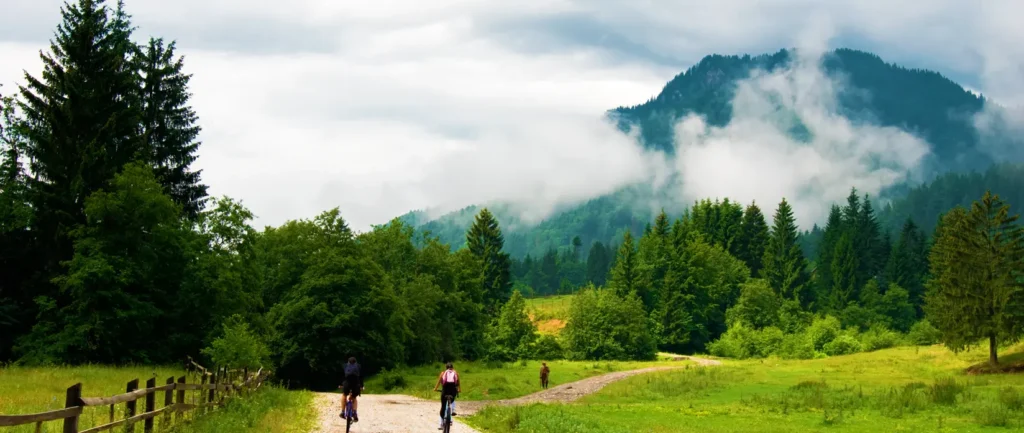Chapters
Lonely Planet named Transylvania the top destination of 2016, and they did this for a good reason! Prince Charles declared many times that Transylvania conquered his heart for good and that this region is a piece of true Heaven. Dracula was born here, and vampire legends are still part of the locals’ lives. The food is delicious, and the strong palinka (the traditional tipple) will cheer up all of your senses, especially in the morning, as locals consider it better than the usual morning coffee.
Being one of the most famous areas of Romania, Transylvania is located in the heart of the country and is surrounded by the Carpathians like the walls of a fortress.
The region perfectly combines man’s wonders with nature’s and is filled with medieval history and fantastic landscapes. Here, you will find the Villages with Fortified Churches and the historic city of Sighisoara, both part of UNESCO’s list of World Heritage Sites.
The wilderness of the Carpathians makes the region a perfect location for a getaway from the city. Hiking or trekking along the valleys and mountains is a popular activity.
UNESCO fortified churches of Transylvania
In your trip to Transylvania, you must stop and visit the authentic fortified churches dating back to the twelfth-century of which seven are in the UNESCO list of monuments. Although each fortified church is a special defensive solution, they can be grouped into three types.
Typical for the lowlands from the Country of Barsei are the churches with fortified enclosure. They have the defensive installations placed almost exclusively on the site with the church being little or no fortified. The most authentic example of this type of fortified church can be found in Prejmer. Prejmer fortified church is an early Gothic church of the Holy Cross built in the shape of a cross, built in the 15th century.
The second type you might encounter in Transylvania is fortified churches. They are typical for the hilly areas and have defensive elements present equally on the site and in the construction of the church. Churches from this category have been restructured by eliminating the lateral sides and building defensive floors above the main side. The churches were also surrounded by a fortified area.
The most remarkable for the complexity of the defensive arrangements are the churches from Valea Viilor and Biertan. The fortified church from Valea Viilor was transformed into a Gothic-style fortified church in the early 16th century. The fortified church from Biertan was completed on a low hill around 1522-1523. It is a late Gothic-type building with two lines of walls.
The most impressive element at Viscri is the fair and balanced style of the fortifications, which are present both in the church and on the site. The fortified church from Viscri is a Romanesque chapel fortified in the 16th century with semi-circular arches. The walls were strengthened in the 17th century.
The redoubt churches emerged in the late 15th century and represent the last stage in the evolution of fortified churches. These were churches built from the start with strong defensive installations and less fortified enclosures. The first redoubt church was built in 1946 in Saschiz, and it was finalized in 1525. It has the appearance of a high bastion. The other two examples are the churches from Calnic and Darju.
Calnic fortified church was initially a chapel transformed by the villagers into a fortified church by raising the walls fitted with two towers. In the village of Darju, you can visit the Gothic church which was fortified in 1520 and restructured in the 17th century.







